Both of these public parks were once the estates and mansions of wealthy Liverpool merchants, whose fortunes were made through the slave and cotton trades. Such owners often planted exotic specimen trees in their gardens, and now, over a hundred years later, those trees are giants of their kinds. The Allerton Towers estate belonged to the Earle family. In the 1830s, when the British government emancipated the slaves, the Earles were compensated over £25,000 for the liberation of over 300 slaves on 12 estates in Antigua. The mansion was built in the 1840s, but is now seriously dilapidated and boarded off.
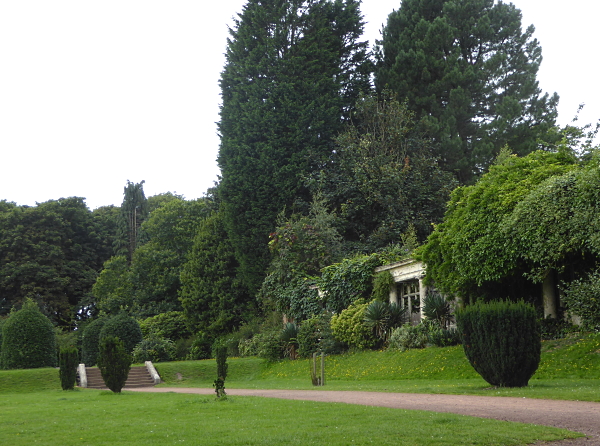
The path from Menlove Avenue to the old mansion is lined with alternate Hollies and Hawthorns, but all the Hawthorns are in trouble. They look like they’ve been ravaged by hordes of locusts, leaving just some leaves at the very top. I wonder what has caused that? Heat or drought stress perhaps?
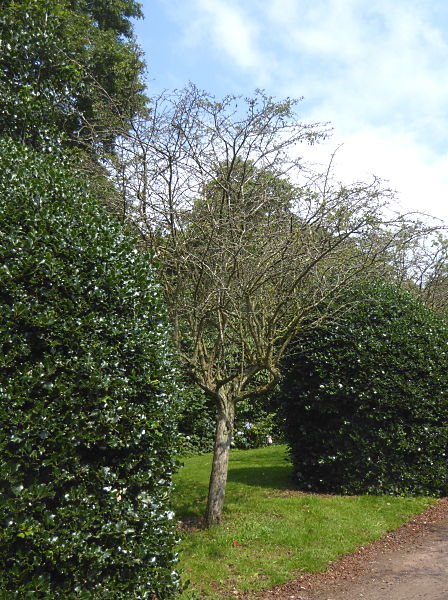
Near the old house I was admiring the very tall Monkey Puzzle, one of the old giant specimen trees, when I got into conversation with man walking his dog. He was Peter McAvoy from the Merseyside Youth Challenge Trust, to whom the council have leased the old building on condition that it is restored, the main task being to fix the roof. Somehow we got to talking about MNA founder Eric Hardy and how there used to be a sign nearby marking the nature reserve named after him. Peter took me into the courtyard and showed me that same old wooden sign that he had rescued from a council skip. It is too far gone to restore, but he hopes to make another.
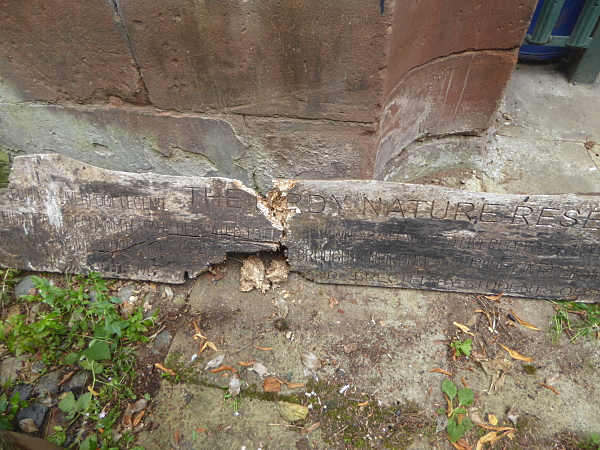
He also hopes, one day, to have a café and toilet block as part of the amenities of the park, and he is preparing to plant trees in the garden behind the house. He had some ready in pots – Oaks, Birches and some with big leaves that I puzzled over, but decided must be Magnolias. Good luck to him.
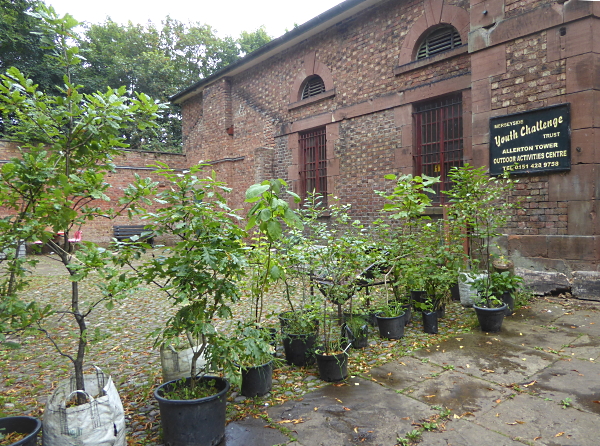
The Rose Garden had a neatly clipped hedge, and next to it was another specimen tree from the days when it was a merchant’s residence – a huge old Bhutan Pine.
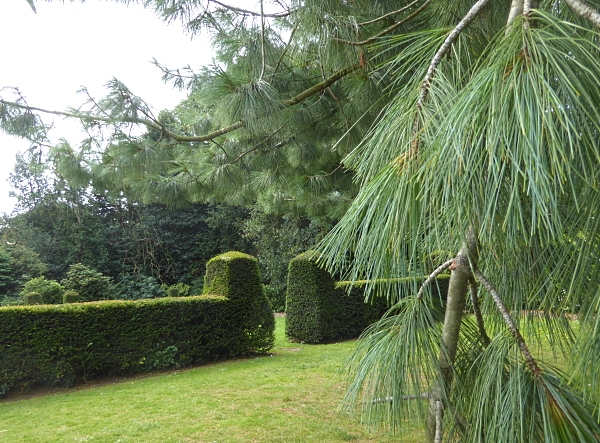
And then I found another rarity alongside the path – a Cedar of Lebanon. I didn’t think there were any left in Liverpool, the one in Calderstones having died a few years ago. But this looked the part – even-length dark green needles, level branches and brownish cones. (Added later – a fallen cone found on 13th September 2020 had a dimple in the top, which is characteristic of Atlas Cedar. It must be the original green variety – most Atlas Cedars are “blue” or “glauca”. So probably not a Cedar of Lebanon after all.)
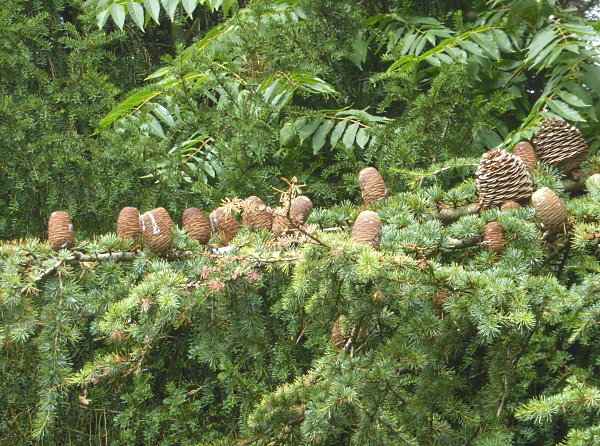
I lunched in the walled garden, which is a lovely sunny spot, with a long herbaceous border. It was mostly filled with the “easy” plants like Hydrangea, cultivated Goldenrod and Russian Vine. There were a few Wood Pigeons and Magpies out on the lawns, a few skulking Blackbirds and one Grey Squirrel. There were no butterflies on the wing. At the east end of the lawn was another specimen tree, a tall Ginkgo. Then I walked via Tesco Woolton to Reynolds Park.
The estate that was to become Reynolds Park changed hands many times, but in the late 19th century it came into the possession of the Reynolds family, who had made their fortune in the cotton trade. In 1929 James Reynolds, the last owner of the estate, donated it to the City Corporation. There is a collection of interesting younger trees on the sunken lawn, including a Wych Elm suckering from a stump, an Antarctic Beech and an Oriental Plane. The walled garden has recently been re-opened after being closed for the lockdown. There was a stunning display of Roses and Dahlias, but just two or three White butterflies gallivanting about. The Judas tree by the entrance arch was in fine fettle, but bore no seed pods. A lady confirmed that she had peered through the gate when the garden was closed, but had seen no flowers. What a funny year! The Indian Bean tree that was broken as a sapling by vandals some years ago is now about 10 foot tall, growing well from the sprouts from the old trunk.
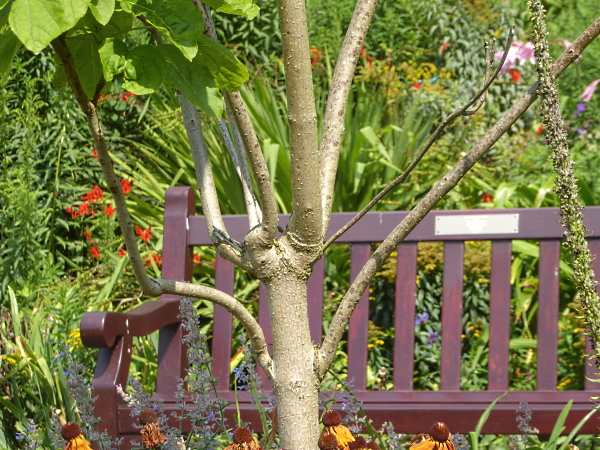
I noted two more old Cedars on the way back to the entrance, which may have been original estate plantings. It’s not often I get a hat-trick of all three Cedar species on one day! One was a Blue Atlas Cedar with ascending branches and bluish foliage.
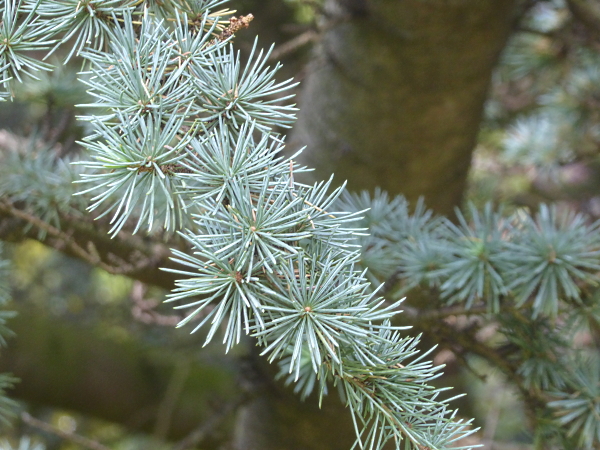
The other was a Deodar Cedar with light green needles of varying lengths and a low-branched trunk, ideal for climbing.
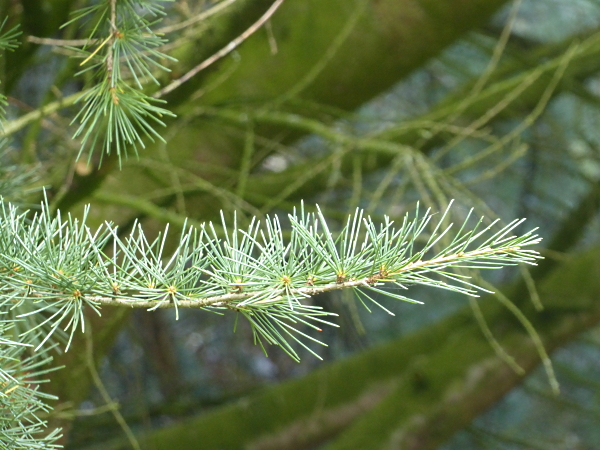
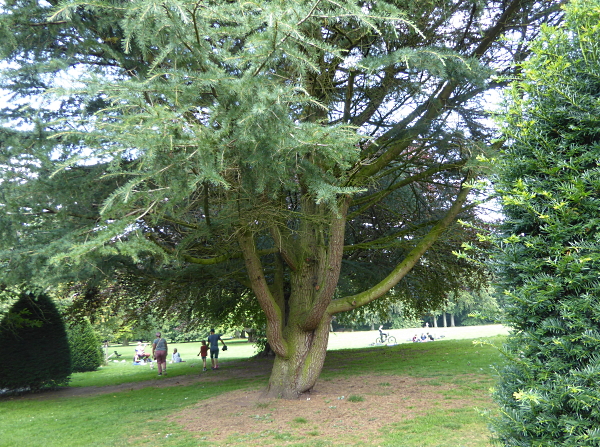
Back on the lawn north (left) of the entrance I admired the very pretty Black Walnut with its delicate pointed leaflets, catching the sun like arrow heads. Over in the shadiest corner was an interesting tree I couldn’t identify, with three-lobed leaves. Amazingly, it was pink all over. Is it some kind of Maple? Is it meant to change colour in early August or is it suffering from climate stress?
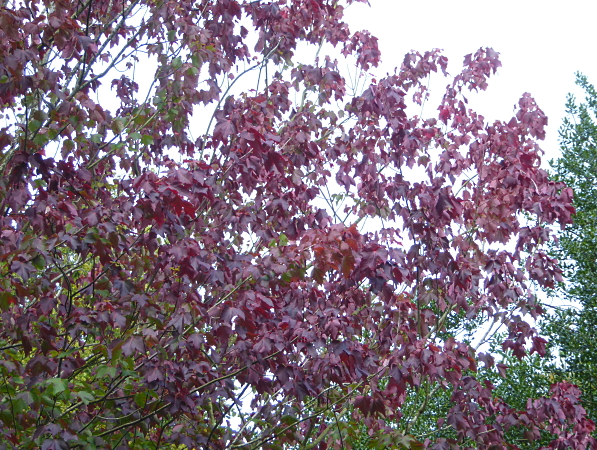
Then I headed off to the back entrance via the wildflower meadow. It was past its best, but still had blooms of Poppy, Ragwort, Wild Carrot, Meadow Cranesbill and Purple Loosestrife. Even here there were only a couple of white butterflies. Where are they all this year?
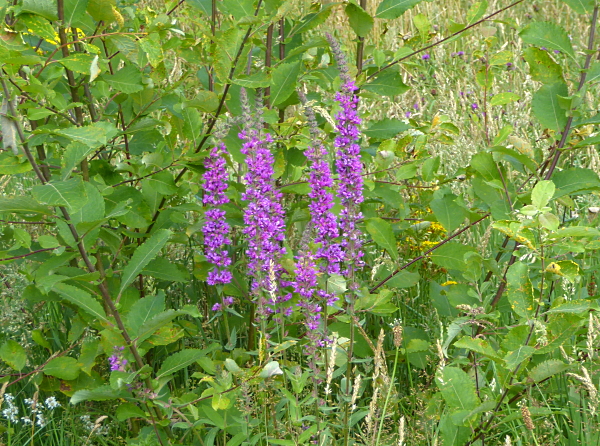
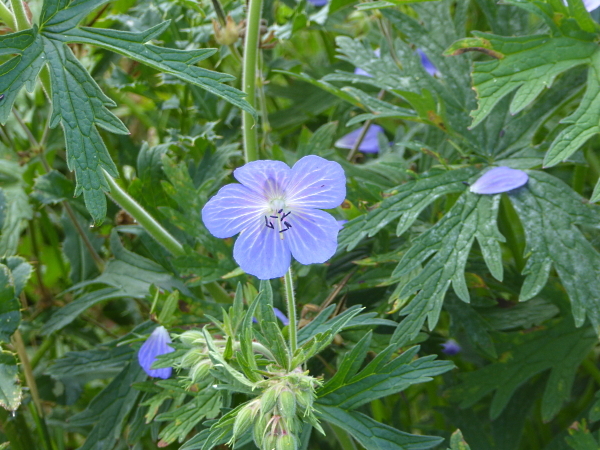
The last tree of the day was the Black Poplar hanging over the back gate. Last time I was here I wondered if it was one of the rare old native Black Poplars or one of the commoner hybrids. The way to tell is that the rare natives have massive burrs on their trunks. Nope, it had a plain and smooth trunk, so it isn’t one of the rarities.
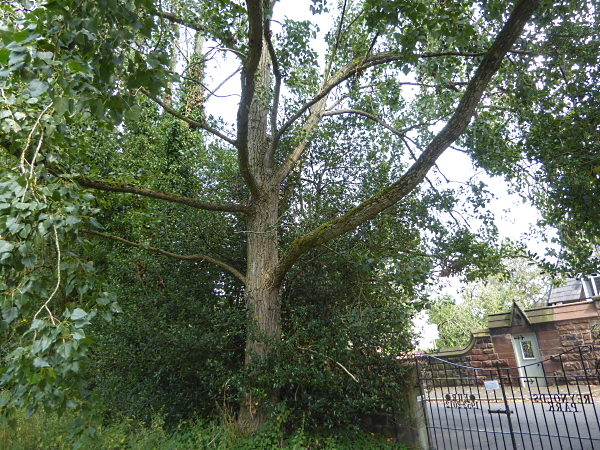
Public transport details: Bus 76 from Queen Square at 10.02, arriving 10.40 at Menlove Avenue / Cheddar Close. Returned from Rose Brow / Woolton Hill Road on the 75 bus at 2.08, arriving Liverpool at 2.25.
